
Do you have a question about the State Water Heaters 300 Series and is the answer not in the manual?
| Brand | State Water Heaters |
|---|---|
| Model | 300 Series |
| Category | Water Heater |
| Language | English |
Defines key personnel and roles for installation and service.
Warnings about fire, explosion, and gas risks.
Caution regarding hot water and potential burns.
Potential for water tank explosion.
Hazards related to flammable materials and gas.
Risks of improper installation or use.
Safety measures before performing service.
Risks associated with carbon monoxide.
Risks from flammable liquids and vapors.
Requirements for qualified personnel.
Steps and considerations before starting installation.
Mandates for CO detectors in Massachusetts installations.
Specific signage for vent terminals in Massachusetts.
Identifies key components of the water heater.
Risks associated with high hot water temperatures.
Suitability for combined heating and potable water.
Describes the step-by-step process when heat is called.
Critical safety notes for electrical connections and servicing.
Over-temperature and pressure switch safety features.
Factors for choosing an appropriate installation location.
Required distances from flammable materials.
Considerations for installation in hot environments.
Importance of adequate fresh air for combustion.
Guidance on connecting water lines and preventing scalds.
Requirements for combined heating and potable water use.
Essential requirements for combo heating system components.
Procedures for installing combo heating options.
Effects of water expansion in closed systems.
Precautions to prevent water damage.
Critical safety information for the T&P valve.
Rules for installing the discharge pipe.
Necessary modifications for high altitude operation.
Warnings and requirements for gas piping installation.
Standards and practices for gas supply lines.
Importance and installation of sediment traps in gas lines.
Precautions to prevent tank damage during filling.
Lists the parts included in the vent kit.
Risks associated with improper venting.
Specifies required distances for vent terminals.
Guidelines for standard side wall vent terminations.
Guidelines for standard roof vent terminations.
Addresses potential ice buildup on intake screens.
Instructions for connecting venting to the air box.
Steps for installing the low profile side wall termination.
Illustrates side wall concentric vent installation.
Illustrates roof concentric vent installation.
Guidelines for spacing multiple concentric vents.
When to use restrictive vs. debris vent screens.
Specifics for polypropylene vent system connections.
Guidelines for determining vent pipe size and length.
General rules for installing vent pipes.
Steps for preparing PVC/CPVC pipes for joining.
Proper techniques for cutting and deburring pipe ends.
Detailed steps for applying primer and cement.
Ensuring the blower assembly is securely mounted.
Steps for joining vent pipes to the blower.
Risks of flue gas leakage from vent connections.
Precautions for securing vent connections.
How to handle exhaust condensate.
How to handle intake condensate.
Verifies proper placement and clearances.
Ensures gas supply is correctly connected.
Verifies correct vent pipe installation and materials.
Confirms correct vent termination placement.
Ensures water piping is correctly installed and leak-free.
Verifies proper electrical hookup and grounding.
Crucial safety steps before attempting to light.
Step-by-step guide for operating the heater.
Guidance on setting the thermostat for safety and efficiency.
Risks associated with high water temperatures.
Explains the different temperature settings on the dial.
Common occurrences during initial startup.
Information on potential operational issues like smelly water.
Safety considerations regarding hydrogen gas.
Routine checks for the heater and its surroundings.
How to inspect the vent system for safety.
How to visually inspect the burner and igniter.
Maintaining a clean and safe environment around the heater.
Procedure for testing the T&P relief valve.
Step-by-step instructions for draining the tank.
Steps for flushing the tank to remove sediment.
Precautions for anode rod replacement.
Identifying common sources of water leakage.
Lists and identifies major parts of the water heater.
Explains soft and hard lockouts and their causes.
Procedure for resetting the heater control after a lockout.
Timing details for the ignition sequence.
How to read LED flash codes for error diagnosis.
Provides specific actions based on error codes.
Addresses common problems and their solutions.
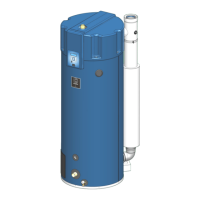
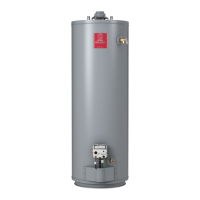
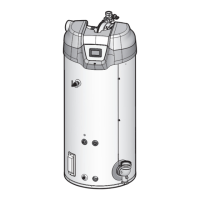
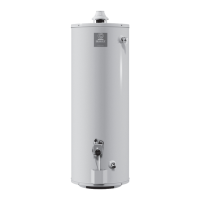



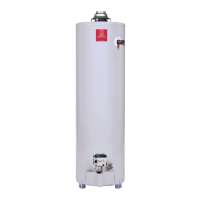
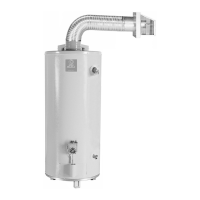


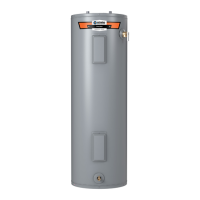
